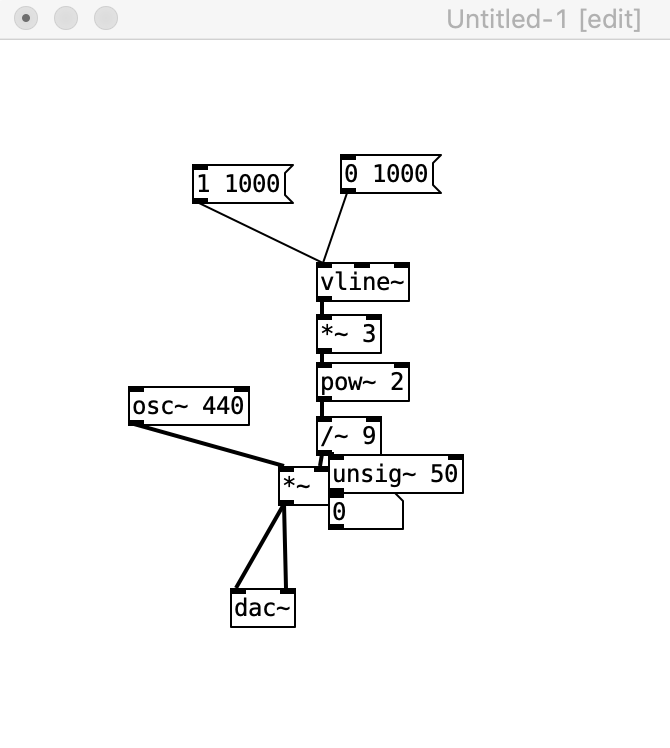Hello all,
So, I got this idea and wondered if it is a fool's errand to use adjust amplitudes with this method:
Instead of using a hanning window, what about doing something like this and triggering the 0 and 1 amplitudes with a trigger:

hanning window vs. using power multiplier
Hello all,
So, I got this idea and wondered if it is a fool's errand to use adjust amplitudes with this method:
Instead of using a hanning window, what about doing something like this and triggering the 0 and 1 amplitudes with a trigger:

@raynovich If it sounds good, why not? BTW, the multiplication by 3 and division by 9 cancel each other out, so you're just squaring the output of [vline~].
That is an excellent article that is very helpful. Thank you.
I believe I started using a hanning window because it helps make a more smooth crescendo or diminuendo. Also, without using a hanning window, digital artifacts can be introduced into the audio. I think that is the reason anyway.
That being said, my patch here makes is not multiplication I believe. It is exponential. Correct. But using a power to the 4th is even better!!! that is great.
Do others use hanning windows? If so, why?
@raynovich technically, yours is a polynomial function. It would be an exponential function if the input was used as the exponent of some constant, like {mtof].
I've only used Hann windows in 2 circumstances: as an FFT windowing function, and for granular synthesis. In the FFT case, the Hann window allows you to overlap each window by a factor of 4 so there are no discontinuities in the inverse transform. In granular synthesis, I've noticed that the Hann window injects fewer harmonics of the looping frequency so that the tone of the wavetable comes through more. I think there's a mathematical explanation of how that works in that same Miller Puckette book.
I'm sure there are other uses I don't know about, maybe someone more knowledgeable can chime in.
Oops! Looks like something went wrong!